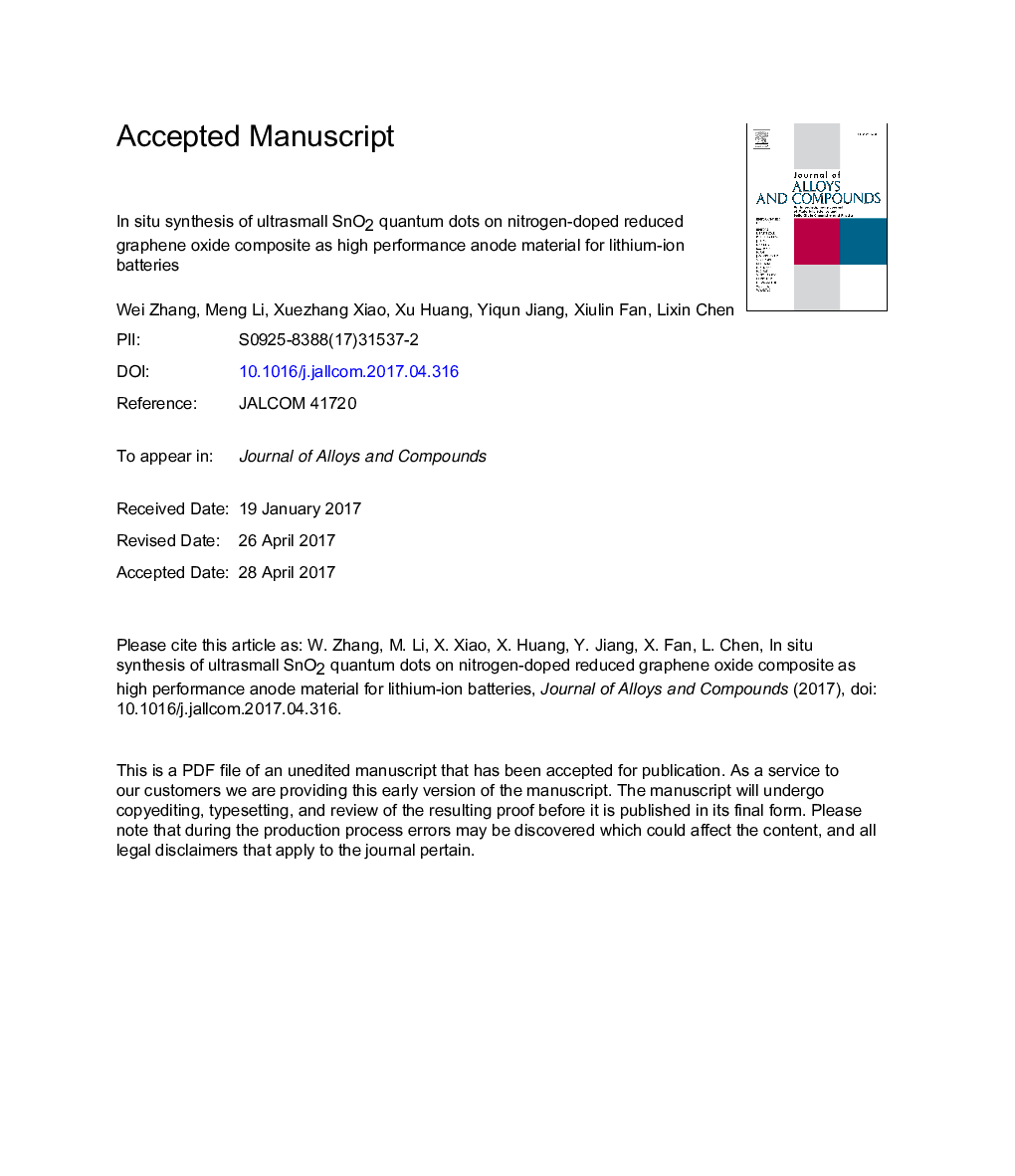| Article ID | Journal | Published Year | Pages | File Type |
|---|---|---|---|---|
| 5458772 | Journal of Alloys and Compounds | 2017 | 21 Pages |
Abstract
SnO2 is considered as one of the anode material for Li-ion batteries in terms of its superiority in high theoretical capacity (1494 mAh gâ1), low cost and environmental friendly. However, it is suffered from several issues such as rapid capacity deterioration, undesirable aggregation of tin particles and pesky expansion of volume. To conquer these shortcomings, a novel composite of ultrasmall SnO2 quantum dots with an average particle size of 4-5 nm anchored on nitrogen-doped reduced graphene oxide (SnO2@NRGO) was first in situ synthesized By means of hydrothermal method. The results show that as-prepared SnO2@NRGO electrode exhibits a greater enhancement in its initial discharge capacity (1678.4 mAh gâ1) and reversible capacity (1333.5 mAh gâ1 after 450 cycles) at a current density of 500 mA gâ1, implying a long cycle life. Furthermore, the high rate capability of SnO2@NRGO is superior to SnO2@RGO and SnO2 electrodes. The excellent electrochemical reversibility of SnO2@NRGO electrode can be ascribed to the great conductivity, ultrahigh specific surface area and the synergetic effect between ultrasmall SnO2 quantum dots and NRGO.
Related Topics
Physical Sciences and Engineering
Materials Science
Metals and Alloys
Authors
Wei Zhang, Meng Li, Xuezhang Xiao, Xu Huang, Yiqun Jiang, Xiulin Fan, Lixin Chen,
